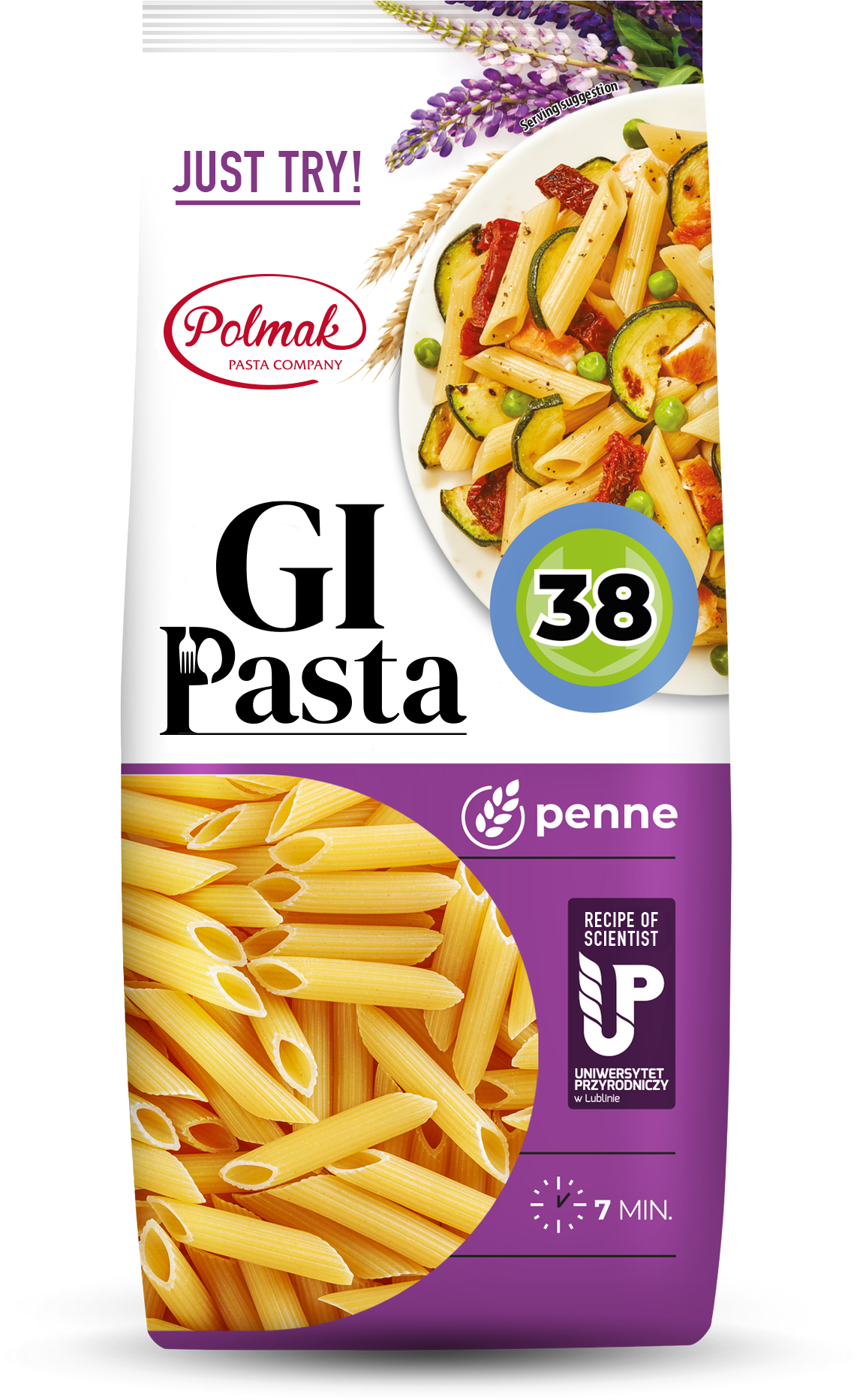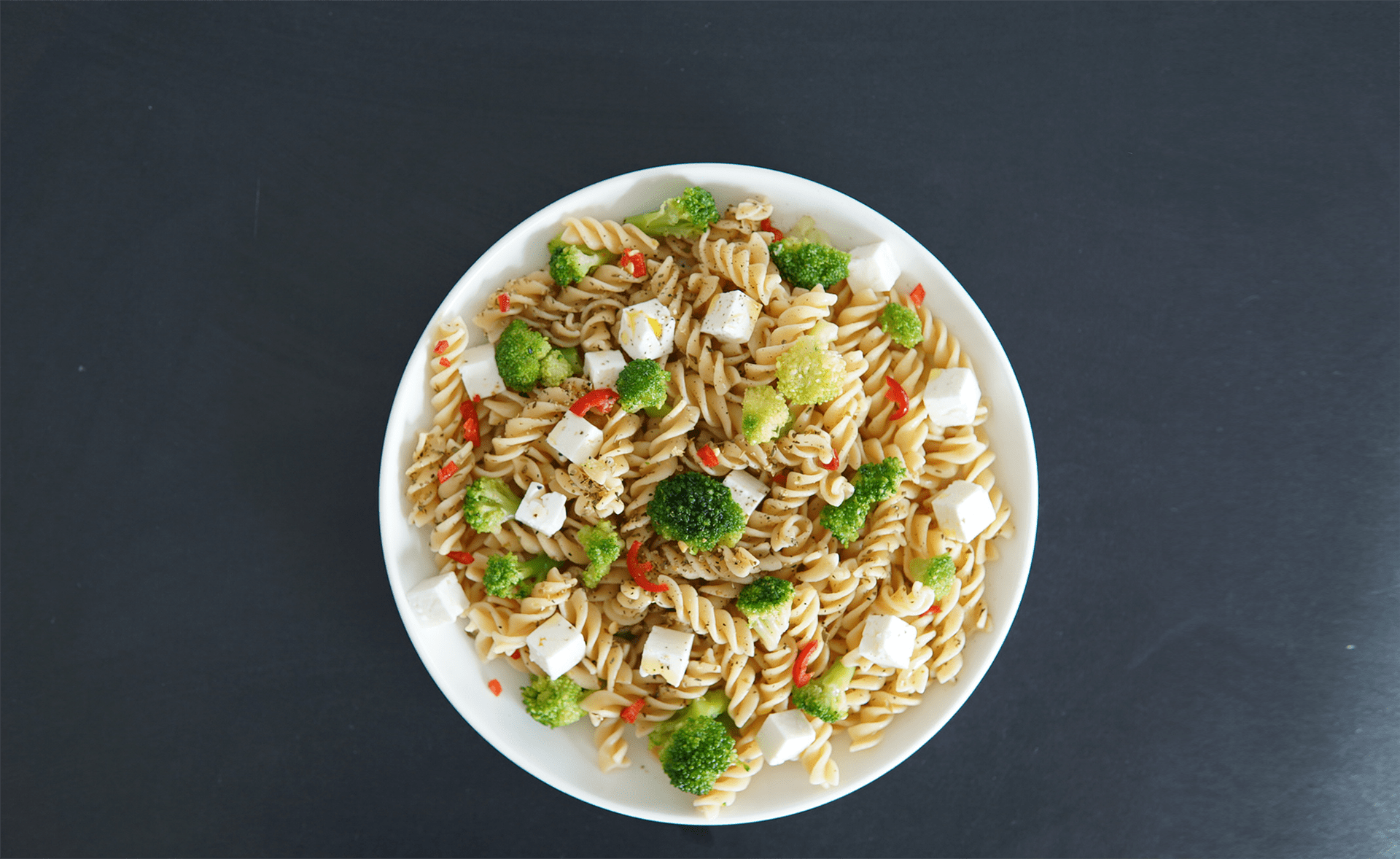Pasta with broccoli, garlic, feta cheese and a hint of chives – 1 serving
70 g cooked white/ low glycemic noodles1 clove of garlic1 tbsp olive oil30 g feta cheese100 g raw broccoliseasoning: large pinch of chives, pinch of salt, pinch of pepperBroccoli finely chop. Crush garlic clove. Pour olive oil into a pan, add broccoli and garlic and lightly season with pepper, simmer for about 6 minutes on low heat. Add cooked pasta to the vegetables, mix. Transfer the dish to a deep plate, sprinkle with crumbled feta cheese and savory.
Calculations for the dish with the addition of plain white pasta:
- Energy: 335 kcal
- Carbohydrates: 36.7g
- carbon dioxide exchangers: 3.3
- Protein: 11.3g
- Fat: 17.4g
- protein-fat exchangers: 2
- Fiber: 3.5g
- Glycemic load: 21.9
Calculations for a dish with the addition of pasta with a low glycemic index:
- Energy: 312 kcal
- Carbohydrates: 23.5 g
- GI: 2.4
- Protein: 12.9 g
- Fat: 18.8 g
- GI: 2.2
- Fiber: 6.7 g
- GI: 7.3
The same dish, and a different effect on health, is it possible? How are these dishes different if the caloric content is basically the same?
They differ in something that is of great importance for both the well-being of people with type 2 diabetes and insulin resistance and affects the satiety after eating.First, a dish with the addition of low GI pasta has a low glycemic load (below 10), while the addition of normal white pasta makes the dish get a high score (above 20). What is the difference for us? Huge!
The glycemic load is a measure of how quickly food that contains carbohydrates raises blood glucose levels. The higher the glycemic load of a dish, the faster blood sugar levels rise after consumption. Foods with a high glycemic load can cause sharp spikes in sugar levels, which can lead to an increase in energy, but also a rapid decline and feelings of fatigue and hunger. Long-term consumption of such foods can lead to health problems such as obesity, insulin resistance, type 2 diabetes and heart disease.
The pasta dish with low GI also has more protein and twice as much fiber, due to the fact that in the composition of this product we find durum wheat flour, oat fiber and buckwheat flour!
Are you still wondering why it is worth choosing low GI pasta from ? Finally, I have a real firecracker for you! It is known that it is more beneficial for people with glycemic disorders and increases satiety after a meal but above all its biggest advantage is the fact that it tastes like normal white pasta! Do not believe it, try it!
Why choose low GI pasta:
- products with a low glycemic index are absorbed more slowly, which leads to more stable blood sugar levels.
- it can help maintain stable blood sugar levels, which is crucial for the health of people with diabetes and insulin resistance.
- it can help improve insulin sensitivity and reduce the risk of heart disease in people with insulin resistance.
- regular consumption of pasta with a low glycemic index can provide a long-term feeling of fullness, which can be helpful in maintaining a healthy weight.
For people with diabetes, low glycemic index pasta can be a valuable addition to the diet, helping to stabilize blood sugar levels and avoid glucose spikes that can be harmful to health.
However, it should be remembered that eating pasta with a low glycemic index alone is not enough. It is necessary to properly balance the diet in good quality protein and the addition of vegetables and healthy fats. It is also crucial to avoid excess calories and regular physical activity.









